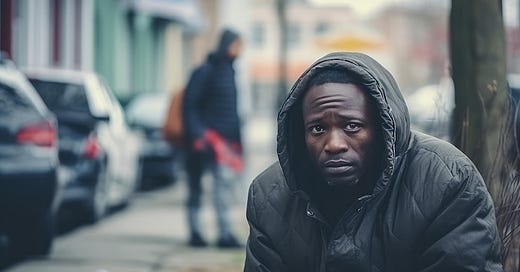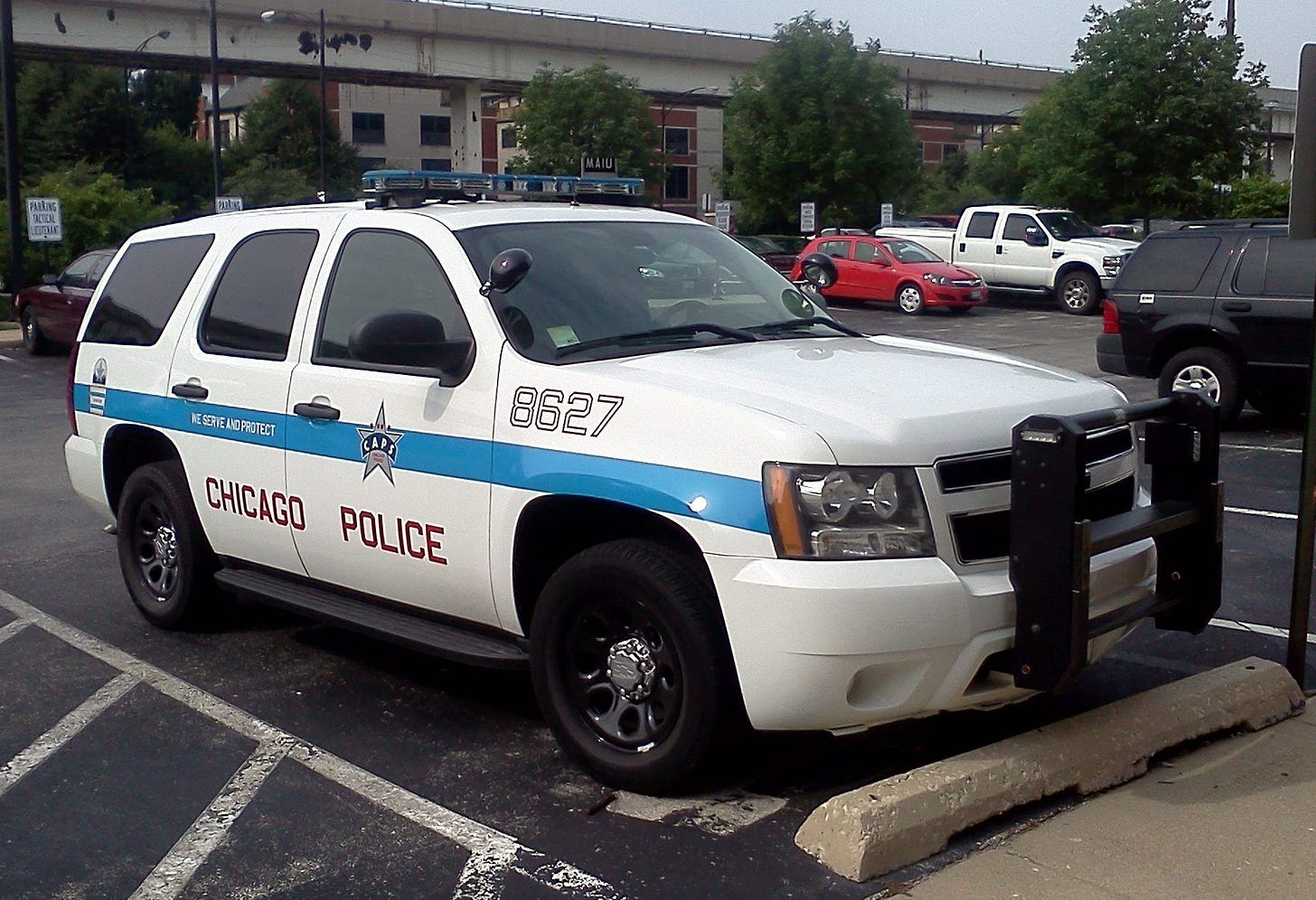Some Challenges Facing the Chicago Homeless: From Lightfoot Lessons to Trump Times
There are a variety of difficulties that have been facing the unhoused in Chicago – the biggest problem being the lack of understanding of the homeless situation. To say being homeless is a lifestyle choice or a result of bad decisions does not get us anywhere.
Instead, it is important to understand that there are a myriad of reasons people suddenly find themselves homeless. This is established in research and can be read about most anywhere. Homelessness is NOT a choice (in most cases) and the great majority of unhoused persons just “want to go home.”
To say that most homeless people do not want to live indoors is a lie.
StreetSense has worked very hard to erase that nonsense from people’s minds, but it has not been easy (https://streetsense.substack.com/p/reaction-to-article-city-says-explosions). We have had police, counselors, average citizens, aldermen, and others try to get away with saying homeless people do not want help. We have been on this case, and we have been saying since we began the blog in 2021 that people in general need to work much harder to understand the world of the homeless.
The homeless are in “the condition of being without a home” in the great majority of cases. To prove they in fact want a home, witness the huge number of tents, lean-tos and other spots converted into—or built as—homes for the unkeyed. They want to come indoors, and they will do so however they can.
Living indoors can include sleeping in a tent. Preparing meals in a park. Going home from work and sleeping in a sleeping bag under the stars.
To say the tents are becoming more common and people do not know why is pretty foolish. A recent article in Chicago talked about the increase in tents along Lake Shore Drive (https://www.msn.com/en-us/news/us/tent-cities-continue-to-grow-along-chicagos-lakefront-sparking-concerns-for-residents/ar-AA1tvcSS). There were many scary thoughts expressed – like the idea that children had actually been seen in the tents! My gosh!
Does your average citizen (housed or not) realize there are well over 50,000 homeless children in Illinois? These are well documented cases.
A recent video is trending now, showing tents galore and folks wandering around outdoors. Well, why this is so very surprising is not clear at all. If people do not have a place to live, where would you expect them to be? Of course they would be outdoors! Of course they would try to find shelter! Of course they would put up a tent and do their best to survive the chilly air!
Now that Trump has been elected president again, homeless persons face some greater challenges than they did a week ago. The Supreme Court recently voted it was acceptable to arrest, jail, and fine the homeless for falling asleep outdoors (https://www.scotusblog.com/2024/06/justices-uphold-laws-targeting-homelessness-with-criminal-penalties/). Where all the homeless are supposed to go, nobody knows. But they have to be out of sight – they have to go hide.
Now that COVID is not as much of a threat – though it is still out there folks! – it is easier to get away with putting up a tent – near other tents – and settling in for awhile.
During the COVID-19 Chicago Lockdown (capital letters cuz it is a famous part of history now) under then-Mayor Lightfoot, homeless people were sometimes allowed to sleep in the doorways of some of the police stations… and other places that you would think would be halfway secure for them.
Some homeless were threatened with arrest, and still others simply “hid” in garages, alleys, basements, abandoned buildings, and on the bus or train, saying they were on their way to work, on their way home, or on their way to a relative’s house to shelter away from the pandemic.
These were terrible days, indeed. They mark a rotten and disgusting chapter in Chicago history. The homeless, who had nowhere to go to begin with, had to hide even better.
Many, many unhoused people when being interviewed would say, out of desperation, “Go where? Go f*cking where?”
During those days, the shelters were a death sentence, complete with fights, robberies, sexual and physical assaults, and often staff members who were harder to trust than the other residents were.
To be fair, some of the most wonderful and trustworthy people in Chicago in fact work or volunteer in shelters, pantries, warm-up centers, and community centers. However, when things close down hard, there are fewer good people on site and the unkeyed are left with whoever shows up to deal with.
COVID-19 ran through the shelters and hotels, and the city tried to separate people, quarantine the ill, and provide safety for the (relatively) healthy. Mayor Lightfoot will go down in history as doing a great job of keeping rich Chicagoans indoors (https://www.chicago.gov/content/dam/city/sites/covid/health-orders/201112_Stay%20at%20home%20advisory%20and%20guidance_vF.pdf), in their homes, not going anywhere.
However, Lightfoot will also go down in history for increasing the number of persons living outdoors. By the time Mayor Johnson took over, the number of unhoused went well over 65,000. That number has decreased by only a few.
The number of homeless has increased under Johnson.
Enter the migrants. Now that number is anywhere from 20,000 up, depending upon whom you ask. The solution to that part of the problem might be coming swiftly. If Trump can get at them, they could be deported. So some of the hotel costs, apartment rent costs, and other services could be given to the homeless who were here before the migrant arrived.
What is the answer? A bed in a shelter? An apartment with one year’s rent paid?
The most recent Chicago answer is for migrants to be mixed in with the other homeless persons and give up the 5,000 or so beds they have been using. The beds must be shared by the 69,000 or so native homeless. This is the latest from Mayor Johnson (https://www.nbcnews.com/news/us-news/chicago-begin-shutting-separate-migrant-shelter-system-rcna176434).
Though if Trump can get his hands on the migrants here, he says he will deport as many as he can. He has stated this repeatedly.
That is what Trump and his people say they will do: execute the largest deportations in American history (https://www.rawstory.com/donald-trump-immigration-2669625710/).
There are many ways in which Trump being in the White House could complicate life for people in Illinois—even in Chicago, a sanctuary city.
There is a lot of fear, and a great deal of conjecture about what Trump could try to do anyone in America, including us, including the homeless and the migrants (https://chicago.suntimes.com/elections/2024/11/06/trump-effect-illinois-crime-environment-federal-funding-migrants-cta-brandon-johnson-pritzker).
Trump hates homeless people, dirty cities, tent encampments, and filth. He groups these all together into one “homeless” pot—and he supports getting rid of encampments with no concern for the people living there. This has been a big theme in his comments about cities in California, for example (https://www.latimes.com/california/story/2019-09-17/president-trump-arrives-in-california-after-bashing-the-state-for-its-homeless-problems).
Because Chicago is a sanctuary city, chances are people will go on putting up tents, migrants will continue to arrive, some people will get their rent paid for awhile, and Chicagoans will continue to struggle with questions regarding how much we can afford to pay to keep all these folks housed, fed, clothed, and secured. Translating for them takes time, and finding them work is tricky.
Two areas Chicago has dropped the ball on for both native homeless and the migrants: job training and English classes. There seems to be no good, large enough plan for either problem. The City College system seems to not be interested in either topic – on a big enough scale – and several city departments are not moving quickly enough to assist the migrants.
Who IS doing something to help? The Salvation Army, smaller agencies, churches, and community centers are slowly building steam in the work to help the migrants get working, get speaking English, and get out of the trap of being homeless in a city where not everybody speaks Spanish (or French or Somali, etc.).
God willing, we will all be healthy enough to keep working to find and implement solutions to all of the above. It’s just that now, we may face some greater complications.
Help is on the way, and in Chicago a lot of it will continue to be on a neighborhood level – as all good things are here. People will continue to learn about things word of mouth… and there are many resources like free dinners, lunches, and coats—oh and lots of English-teaching volunteers in this city.
Just not a lot of beds.






